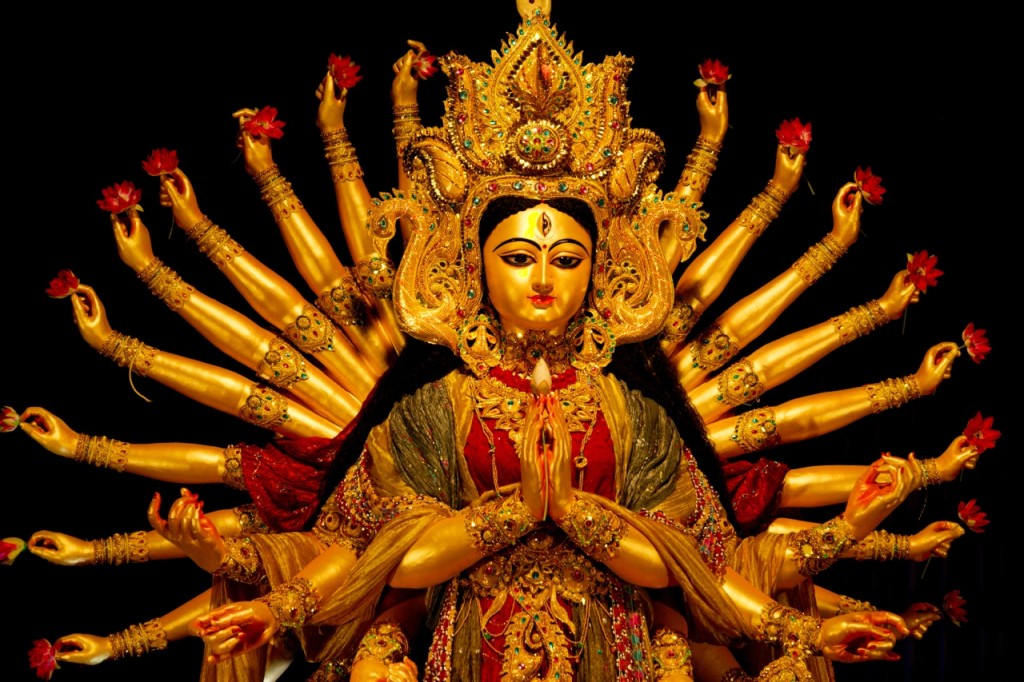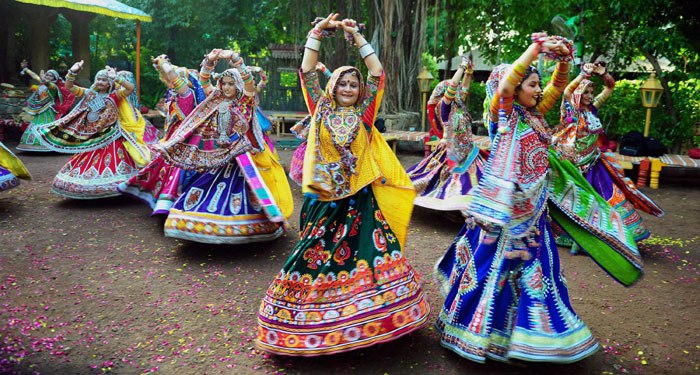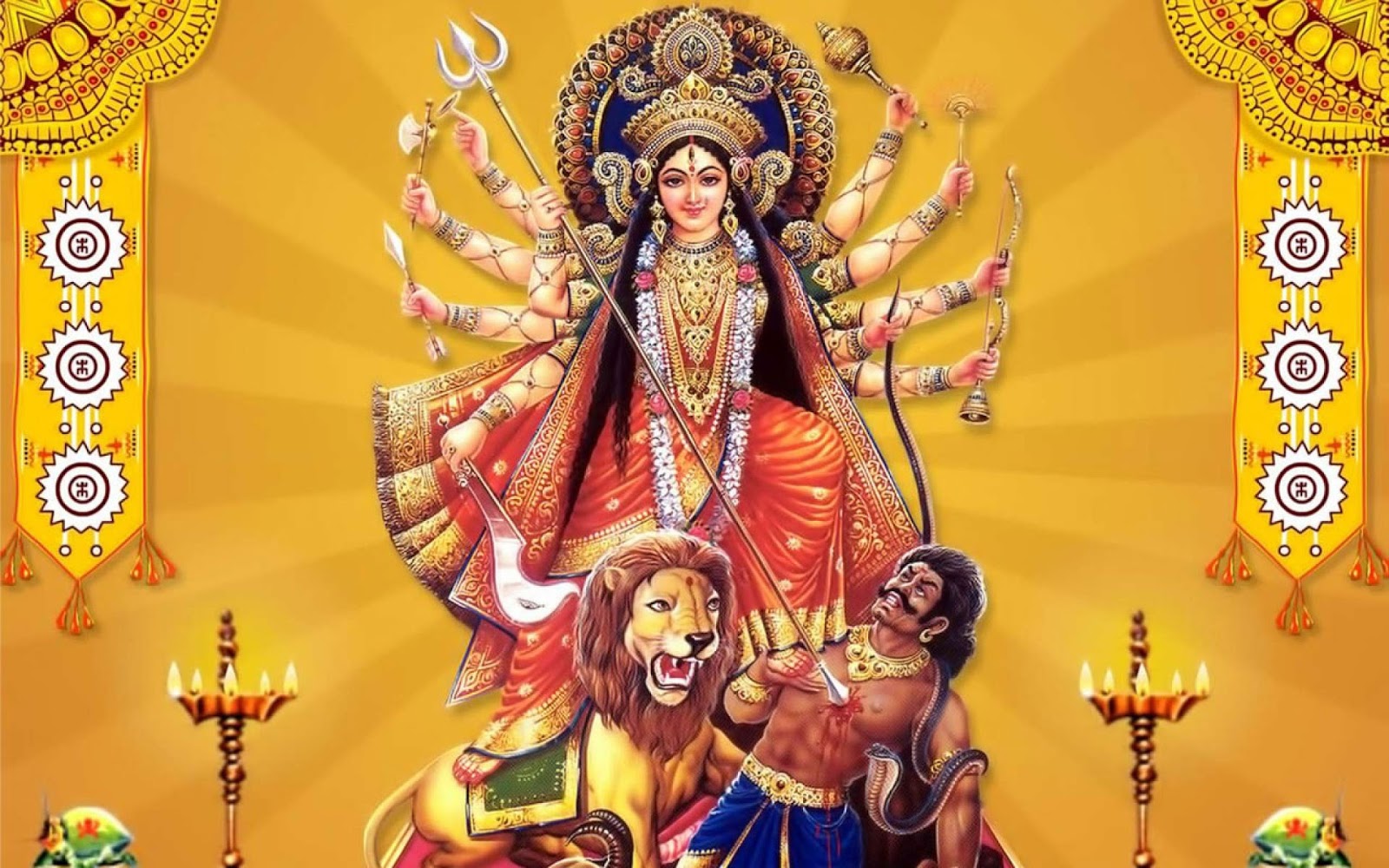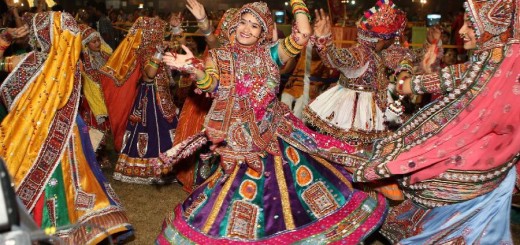Popular Navratri Legends
Navratri is a Hindu festival celebrated all over India. That is exactly what makes it so special. The entire nation plunges into a spiritual mood during these nine days. Navratri means nine nights. Keep in mind that the most important day of the festival is the 10th day which is observed as Vijayadashami (the day of victory).

Durga is the Mother Goddess whom Hindus worship as the Supreme Power.
Navratri 2016 dates
This year Navratri will be celebrated from October 1 to October 10.
Navratri is celebrated twice a year. Chaitra Navratri celebrated in March or April is a low key affair. Sharad Navratri celebrated in October-November is what people mean when they say Navratri. Both versions of Navratri focus on the worship of Goddess Shakti.

In Gujarat and parts of Maharastra, colorful Garba dance is the soul of Navratri celebrations.
Navratri is celebrated in different ways in different parts of the country. In Bengal, the celebrations focus on Durga worship. The idols of the Goddess are brought home and worshipped. In Gujarat and parts of Maharashtra, the celebrations involve scintillating dance performances (Garba and Dandiya). There are several legends about the origin of Navaratri. Here are the most popular ones among them.
Victory over Mahishasura
This is the most popular legend about Navarathri. Mahishasura was a mighty demon. He worshipped Shiva with the objective of obtaining a boon that would make him invincible. His austerities pleased Shiva and so the Lord granted him his wish. Whether you are a man, a god or a demon, if you observe penance, you are bound to get the results. Not even God can deny you the fruit of your labor. Mahishasura was an ambitious demon and his intentions were not pure. Even so, Lord Shiva had to grant him his wish because he had performed Tapas (penance) for a long time.
The boon that Mahishasura obtained from Shiva made him invincible and he soon set out to conquer the world. He started killing innocent people and pious sages and thus unleashed terror on earth. He wanted to conquer the seven worlds. Nobody could save the hapless creatures on earth or other worlds from his tyranny. Even the three Gods of the Hindu Trinity – Brahma, Vishnu and Shiva – couldn’t stop him. Since none of them was capable of defeating Mahishasura on their own, they decided to unite their powers. Thus they created a divine being called Shakti or Durga, the Warrior Goddess. Each God gave Durga their best weapons. With all the accumulated power and the weapons given by the gods, Goddess Durga set out to defeat Mahishasura. A fierce battle ensued between the two and it lasted nine days and nights. Durga killed Mahishasura on the tenth day. Thus she restored peace and happiness in the universe. Each year Navaratri is celebrated to commemorate this victory of good over evil. The nine nights of the festival symbolize the nine nights of the war between the Goddess and the demon.
Other Legends
Another popular legend associates Navaratri with the practice of worshiping one’s tools and weapons. In India the rainy season runs from June to September. During this time, Kshatriyas used to abstain from warfare. Once the monsoon is over, they will start preparing themselves for wars again. Before commencing any war activities, they will worship Ma Durga for full nine days. In many parts of South India the worship of one’s tools is the most important ritual performed during Navratri.
Navaratri celebrates Goddess Durga in her various forms. Interestingly, this festival has an association with Lord Rama as well. Demon king Ravana had abducted Rama’s consort Sita. In order to free her from Ravana, Rama had to wage war against him. Knowing that Ravana was very powerful, Rama worshipped Goddess Durga in her nine different forms to obtain the strength required to kill him. The nine nights on which he worshipped the Goddess became Navaratri. On the 10th day, Rama killed Ravana and that day is celebrated as Vijayadashmi.

